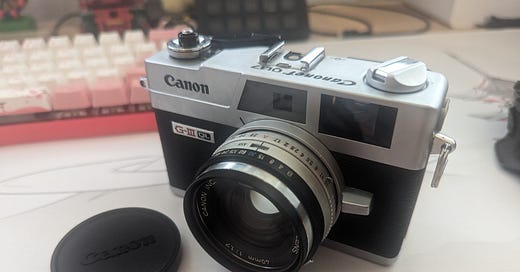When I decided to get back into shooting film, I needed a camera. I have quite a comprehensive digital kit, though I had found myself avoiding daily photography. My camera kit left my house with me when I was going somewhere with the intention of taking photos, but I almost never left with my camera when I was going out for other reasons. I found the Canonet through reviews saying it was compact, cheap, and reliable, and I figured I’d give it a shot. I’ve run about 5 rolls through the Canonet now.
Size
Unfortunately, mine sits on my shelf more than in my bag, but that’s mostly because it’s fallen victim to gear acquisition syndrome and buying more specialized camera form factors. It’s compact enough, but the protruding lens does make it hard to carry for me. It’s a bit clunky in a jacket pocket, so it really has to be on a sling or in a camera bag. These days, I’m either carrying an SLR (Nikon FE2) in a bag, or slipping my Olympus XA in my pocket. If you’re a fan of sling carrying an everyday camera, this camera is pretty much perfect for that, but if you plan on using a camera bag, the size difference probably isn’t enough to choose this over an SLR. It’s definitely not a pocket camera.
Features and Controls
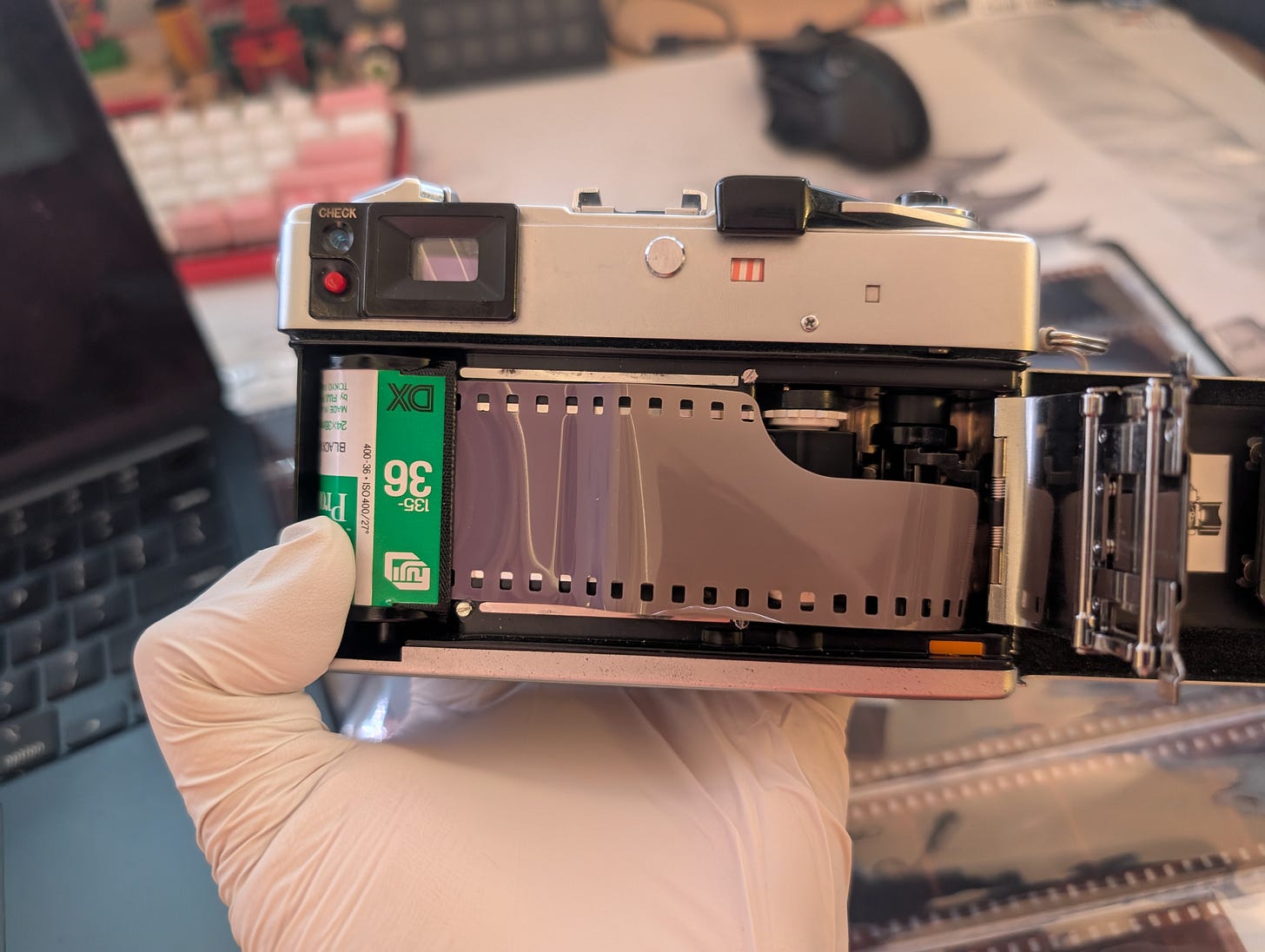
The “QL” stands for the Quick Load feature, which honestly lives up to its name. Open the back, pull out the film leader to the mark, close the back. It’s worked reliably for every roll of film I’ve put through it, as well as a test roll that I’ve run through it a handful of times as I was trying to figure out exactly how the mechanism worked.
The camera has a ready indicator and a film movement indicator, both very helpful to both beginners who are unsure if their camera was loaded/unloaded correctly and to experienced photographers who want a quick check.
Lens and Focus
The Canonet has a 40mm f/1.7 fixed lens. It’s very sharp, and the wide aperture lets you pull in plenty of light. No big complaints here. It does wobble very slightly, which is a known issue that people say doesn’t really affect image quality in a noticeable way.
The rangefinder patch may be somewhat faded depending on your specific example, but it is well sized and pretty easy to focus. The focus knob/lever is smooth with a good travel range (1/8th of a turn). It does not focus as close as I’d like, with a minimum of 80cm.
The included slip on lens cap is terrible and falls off frequently. If left in auto mode, the camera will drain battery if the cap is off, so you’ll want to get a more modern cap to replace it.
Exposure Capabilities
The Canonet can either be shot full manual or shutter priority. The meter is accurate when you account for battery voltage. The high shutter speed mark is 1/500, which is enough unless you’re shooting high ISO in daylight. Aperture maxes out at f/16.
ISO range leaves a little to be desired: it tops out at 800, which is fine. With the battery voltage issues, this practically means you can meter up to 1600 ISO film. I shoot a lot of 3200, so this disqualifies those rolls from going into this camera.
The meter works well, and in shutter priority mode, the camera prevents the shutter from firing if a usable exposure isn’t achievable.
Pitfalls and Problems
The Canonet is an older camera, originally designed to use 1.35V mercury batteries, which are no longer available. Today, your options to get the correct voltage are either expensive WeinCell batteries, zinc-air batteries (1.4V) with a size adapter to fit properly, or modern button cells (1.5V) with a voltage adapter. However, voltage adapters are difficult to find and add to the cost. I chose zinc-air with an adapter for the price, as it worked well and a bulk pack is fairly inexpensive—they’re just generic hearing aid batteries. Carrying extras to compensate for the short battery life isn’t much of an issue. I set the camera a full stop slower than film speed to compensate for the voltage difference in the meter and it has exposed well.
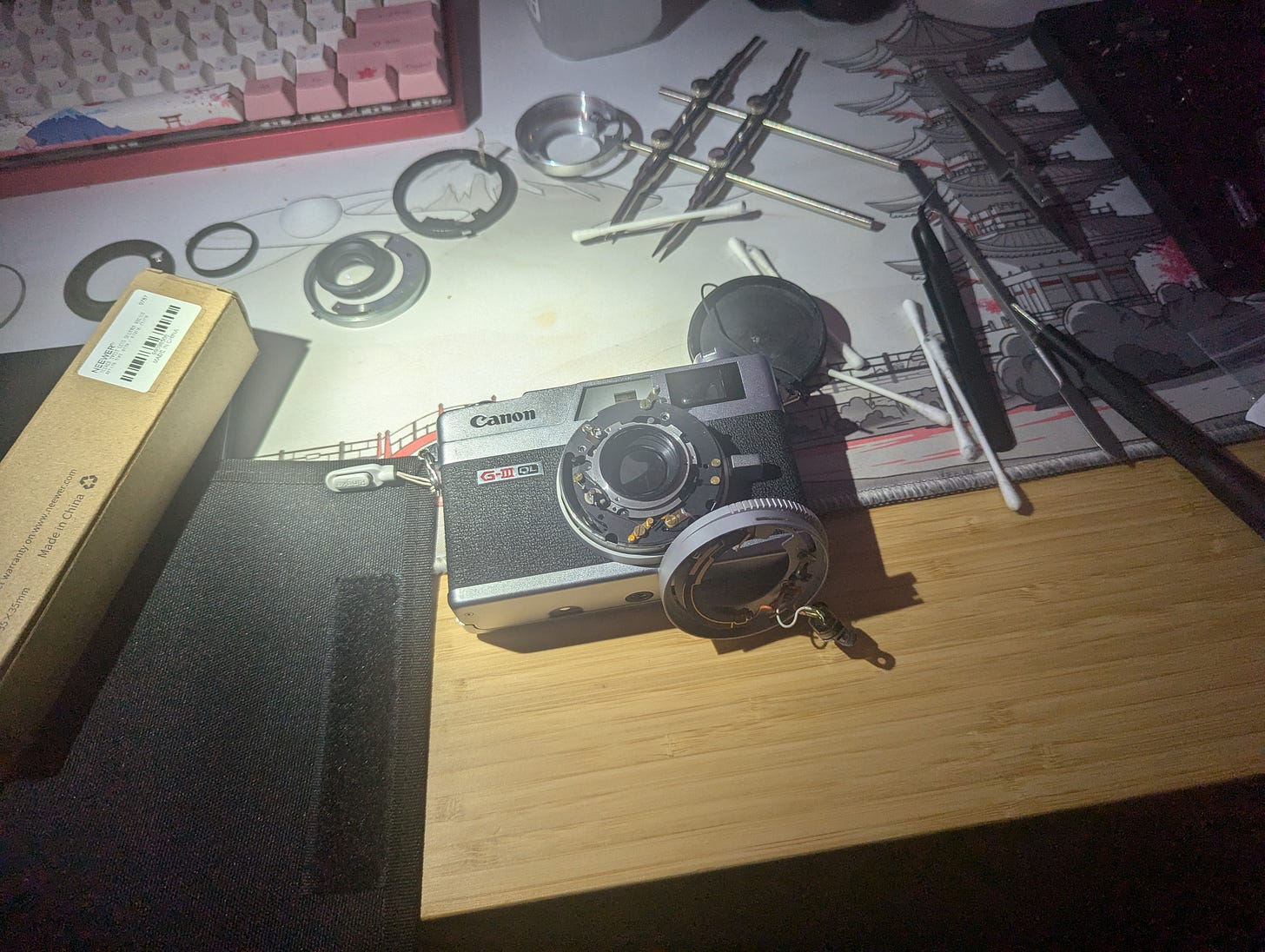
There is also a known issue with the lubricant used in the shutter drying out and causing the shutter to stick with age. I’ll cover the repair on this in a future post, but, as someone who is mechanically inclined, I was able to repair this myself, and it was a relatively straightforward process with only one specialized tool. I didn’t do a great job and marred some of the retaining rings, but it functions fine.
Conclusion

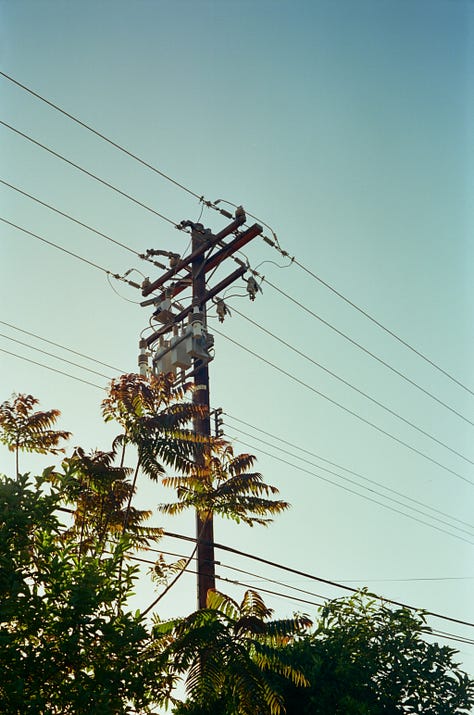
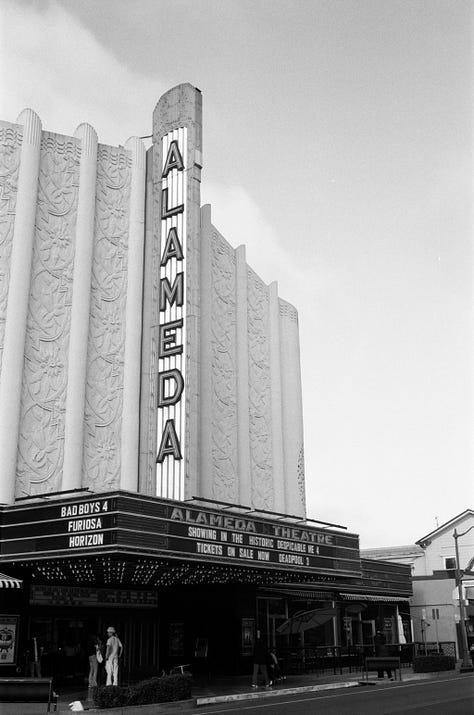



The Canonet is a great beginner camera. I’d highly recommend it to beginners seeking a single manual camera that they can carry daily, provided they’re using a strap or a bag. It’s easy to use, well built, and produced great images. The shutter priority mode lets it work pretty much as a point and shoot, and the manual controls are there if you want them.
If this isn’t your first film camera, you may be better served by other options. An SLR will provide more features and control for only slightly more bulk, and a true compact camera like an Olympus XA, Minox, Rollei 35, Contax T, or one of many full auto only options will much more easily fit in a pocket. It’s also great if you’re looking for a cheap entry into rangefinders. A good example can be had for 200USD from Japan. I debated selling mine, but having an extra camera around doesn’t hurt, so I’m hanging onto it.

